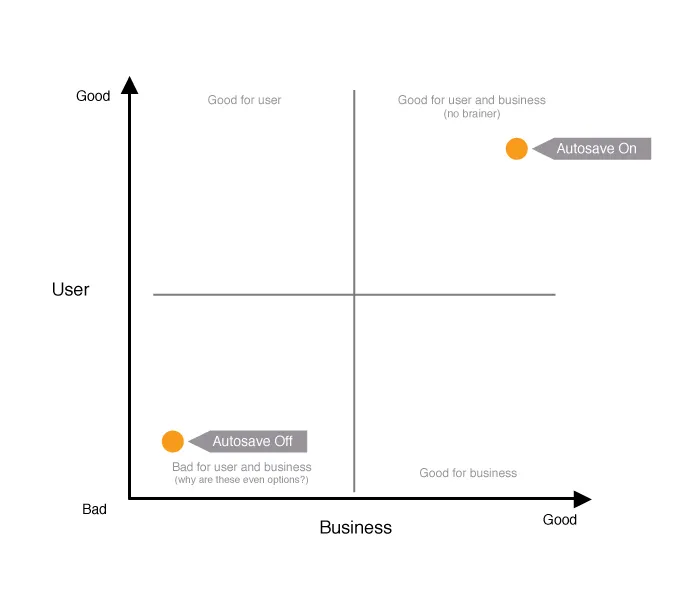There is so much that goes into pushing great design out into the world. A good place to start is getting the right personalities on your team. Now, no personality is without it’s downsides, but here are a few that I think can be pretty helpful. Keep in mind that these may not be individual people. Depending on the size of the team, they might be all rolled up into one.
1. The Perfectionist
No detail is too fine, no nuance too miniscule. The Perfectionist is the purveyor of consistency. The pusher of precision. They can spot a 2px spacing issue from three desks away, and lie in bed at night sweating about line lengths and font sizing.
Why you need them: Things can get crazy over the course of a project. As the number of files, layouts and versions grow the details can get sloppy. The Perfectionist is there to keep it all on the rails. If they aren’t doing the work themselves, include them in as many reviews as you can. I guarantee they’ll catch things no one else will.
2. The Visionary
The visionary is convinced you should be designing an Oculus Rift experience to control a 3D printed drone. They live on the bleeding edge and watch the latest trends. You may have trouble pulling them away from the latest Chrome experiment in order to get some actual work done.
Why you need them: A team’s energy ebbs and flows. The more you can keep people excited and energized the better their creative output. While a lot of ideas may not be feasible, the Visionary brings a steady dose of creative energy, inspiration and excitement to the table that can push the team to think outside the box and encourage people to go out on a limb.
3. The Closer
Designing is only half the battle. The rubber meets the road when it’s time to get a design from prototype (or comp) to actual living, breathing creature in the wild. That’s where the Closer comes in. The Closer is all about the nitty gritty. They have a deep, unending love for specs and annotations, and the technical know how to wade into detailed conversation with engineers. They are tough and persistent, with enough passion and dedication to push until the very end.
Why you need them: With all the demands on a design team it can be easy to “finish” a design, pass it over to engineering and move on to the next thing. But the best design teams put as much emphasis on shepherding their work through development as they do on designing the thing in the first place.
4. The Straight Shooter
Honesty is the best policy. The Straight Shooter believes this to the core. If they think something is good, they will tell you. If they think something is crap, they will tell you. Feelings be damned, they are going to give you their honest opinion, especially if they think it’s going to make the work better.
Why you need them: Honesty and critique are key to getting great design work out the door. Sometimes design teams can fall into a habit of sugar coating feedback and letting things slip through that might not be at the level you want. The Straight Shooter helps keep everyone accountable and makes it less likely that the team will develop bad critique habits.
5. The Wolf
“I’m Winston Wolf. I solve problems.”
Cool, calm and collected, the Wolf excels in high pressure situations. Creative workarounds and decisive problem solving are the Wolf’s forte. They are reliable, dedicated and level headed, with a killer instinct for cutting through drama to get to the heart of a problem.
Why you need them: Over the course of a project it is inevitable that something is going to blow up. Files get deleted. Scope creeps. Deadlines shift. If not addressed quickly, those things can completely derail a project. Fortunately, if you’ve got a Wolf on your team, you can rest easy. When the shit hits the fan, the Wolf knows how to keep the ship on course.
6. The Producer
Heads down, headphones on. When the Producer is in the zone, everyone knows to give them their space. The Producer is a wizard with their software of choice. They know all the shortcuts and are almost obsessive about streamlining their workflow. They are never more comfortable then when they are churning through work.
Why you need them: Sometimes you just need to get a lot done. Maybe you have to create a ton of content images to fit a new design, or you decided to make a change that now needs translated to all your templates across all your breakpoints. This is the Producer’s sweet spot. Just point them in the right direction and let ’em go.
7. The Politician
The Politician spends more time in meetings then they do in Sketch or Photoshop. But, the Politician thrives at doing the dirty work to sell the design vision, generate buy in, knock down barriers and shield the team from everything rolling down hill. Their ability to design is matched only by their ability to sell it. They manage up and down, carrying the flag of design to the highest levels and inspiring a shared vision throughout the organization.
Why you need them: The process of design is messy business. There are stakeholders to satisfy, a creative vision to maintain, deadlines to hit and expectations to manage. The Politician knows the playing field and the players and is adept at navigating the system. Without them, great design may never see the light of day.
FYI: If you are a team lead, this is probably you. If you haven’t yet, I’d suggest setting aside the next few days to binge some House of Cards :).
—
“7 Personalities You Need on Your Design Team” was originally published in Medium on December 28, 2015.







